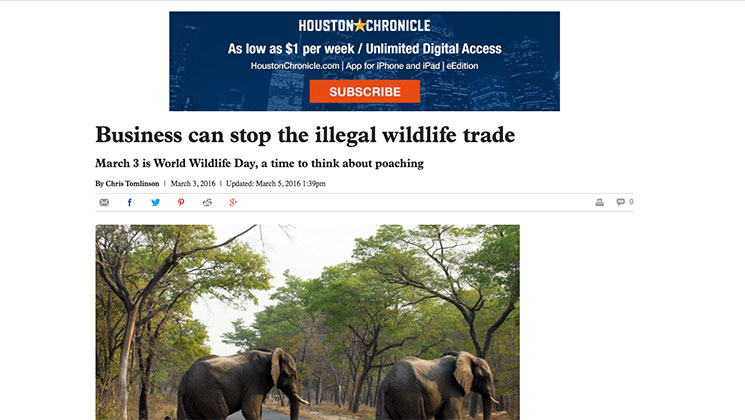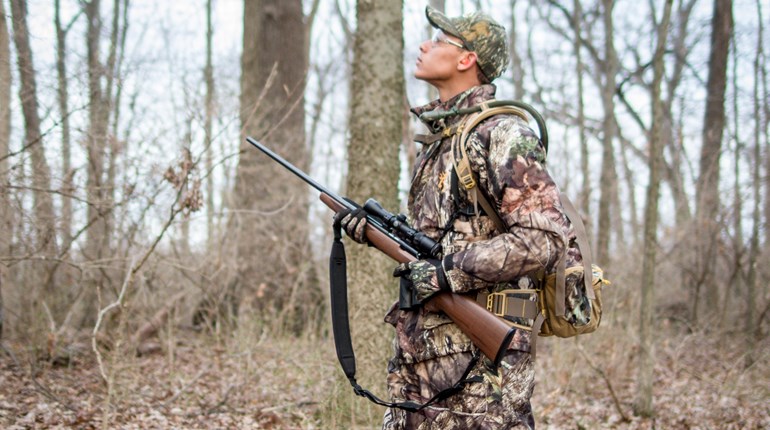
Did you know that the United Nations deemed Mar. 3, 2016, World Wildlife Day? The date was set aside to celebrate wild fauna and flora, raise awareness of the benefits of conservation, and remind us to fight against wildlife crime. But we hunters don’t need a special day to put conservation first. We are as against poaching and the illegal trafficking of wildlife as we are for ensuring hunting’s future as a necessary wildlife management tool. Yet Houston Chronicle business columnist Chris Tomlinson purposely used World Wildlife Day to slam hunters in his March 3 article, “Business Can Stop the Illegal Wildlife Trade.”
Tomlinson marks the day by calling attention to illegal wildlife trafficking. So far so good, but then he says the United States is the second-largest market for illegally trafficked wildlife. Once again, an anti tries to get a leg-up by skewing the facts. When pressed for clarification on this statistic, which also has been reported by other media outlets, the U.S. Fish and Wildlife Service (USFWS) said it is false. In fact, it says, “With enforcement of our state and federal laws, it is the United States catching 90 percent of illegal traders and traffickers.”
Yet Tomlinson goes on to say U.S. business people can stop poaching by refusing to sell wildlife byproducts. He says that 16 companies already have pledged to stop breaking the law, but if it is legal to have certain wildlife parts in commerce, then isn’t it legal according to federal and state law? If it is not, then it is a crime. The USFWS recommends that consumers educate themselves about the laws regarding wildlife in commerce in the same way hunters know to be educated about seasons, bag limits and license requirements.
In his final affront, Tomlinson delivers one last jab, saying, “Displaying elephant tusks in your home when the species is threatened, or picking up a piece of taxidermy of an endangered animal for your den, is vulgar”—misguided words obviously spoken by someone who does not understand hunters’ critical role in wildlife conservation. Tomlinson concludes by saying he found peace in watching black rhinos graze during his years of reporting in Africa and thinks we should allow them to live in peace for future generations. Has he not seen the documented case studies supporting trophy hunting's impact on rhinos in countries such as South Africa and Namibia? As previously reported on this site, the two countries have conserved 90 percent of Africa’s rhinos, yet only 0.34 percent and 0.05 percent of their respective white and black rhino populations were hunted.
Of course, there is no mention of hunters’ role in wildlife management and how our fees are used to fund anti-poaching teams worldwide, particularly in Africa. Hunters know that the increase in poaching harms Africa’s wildlife species, steals revenue from indigenous communities that would have benefitted from hunters’ dollars, and puts anti-poaching teams’ lives at risk. According to the African Wildlife Foundation, more than 100 elephants alone are killed by poachers every day with some of the black-market money used to finance some of Africa’s most brutal terrorist groups.
So in getting back to the significance of Mar. 3, I’m betting it was an ordinary day. Maybe you drove to work recalling that bull you almost had in your sights last fall in between mentally reviewing notes for the morning meeting. Maybe you stopped to appreciate nature as the squirrels and birds fed outside your window. Or maybe you took pride in knowing where hunters’ dollars go and why we are the world’s No. 1 conservationists. For hunters, every day is World Wildlife Day.




































